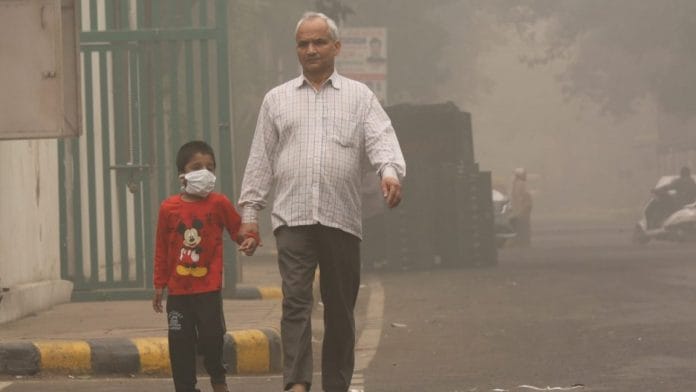Nine-in-10 people around the world live somewhere that has air quality below levels recommended by the World Health Organization. Polluted air is killing millions of people every year, knocking several years off life expectancy for many many children and triggering debilitating respiratory conditions.
Sources of dirty air include industrial emissions, the burning of fossil fuels, and other contaminants in peoples homes, and a variety of travel and transport activities. In many towns and cities, one of the most apparent and obvious causes of air pollution is the motor car.
Now, the UK’s Royal Horticultural Society (RHS) says it has identified a potential ‘super plant’ that could be effective in absorbing emissions from heavy traffic.
Dense, hairy vegetation
The Cotoneaster franchetii is a dense, evergreen shrub with thick, glossy dark green leaves that are covered in tiny hair-like fibres. Compared with other plants commonly found in the UK, the orange cotoneaster, as it is sometimes called, is ”at least 20% more effective at soaking up pollution.”
The RHS found that a one-metre length of dense cotoneaster shrubbery could soak up an amount of pollution equivalent to a car journey of 800km in just seven days.
“On major city roads with heavy traffic, we’ve found that the species with more complex, denser canopies and rough and hairy leaves such as cotoneaster were the most effective,” says RHS lead researcher, Dr Tijana Blanusa.
“We are continually identifying new ‘super plants’ with unique qualities which when combined with other vegetation provide enhanced benefits while providing much needed habitats for wildlife,” adds Alistair Griffiths, RHS Director of Science and Collections.
Other potential super plants include ivy, which the RHS says helps cool buildings when grown up walls, and hawthorn and privet, which help during intense summer rainfalls to reduce localised flooding.
“If planted in gardens and green spaces where these environmental issues are most prevalent,” Professor Griffiths says, “we could make a big difference in mitigating against and adapting to climate change.”
Also read: Data is transforming the way we take care of the ocean. Here’s how
The need for trees
There used to be around 6 trillion trees on Earth, according to data from the World Economic Forum. Despite efforts to stem the global tide of deforestation, somewhere in the region of 15 billion trees are lost every single year, with the total number of trees worldwide thought to has fallen to 3 trillion.
At the 2020 World Economic Forum Annual Meeting in Davos, the Trillion Tree Platform (1t.org) was unveiled.
Envisaged as a plan to support the UN’s Decade on Ecosystem Restoration (2021-2030), 1t.org aims to create support for tree planting around the world. The ultimate goal is to conserve, restore and grow 1 trillion trees by 2030.
The pollution picture
Trees and plants are critical to the health of the planet for many reasons, including their role in sequestering carbon, regulating temperatures, and acting as flood barriers.
They’re also essential for filtering air pollution – a significant risk to health across the globe. In a separate piece of research in the UK, the RHS found that air pollution affects one in three people.
In low-income countries, things are substantially worse. Of the 4.2 million whose lives were cut short by polluted air in 2016, the World Health Organization says 91% lived in low- and middle-income countries, with the greatest concentration in South-East Asia and the Western Pacific region.
Reducing air pollution can help reduce the incidence of illnesses like stroke, heart disease, lung cancer, and respiratory ailments such as asthma, all responsible for premature death figures.
Greener transport systems, better energy-efficiency, cleaner power generation, more renewables and lower emissions will all help. As will an increased commitment to greening urban environments with more plants, shrubs and trees.
This article was first published in World Economic Forum.
Also read: Street trees can reduce people’s need for antidepressants, says study







Plants do not absorb particulate matter.
Voc which is absorbed isnt the key concern.
Sorry, poor article.
Insightful article, there should be a similar research in India regarding India specific pollution, although vehicular pollution which is the biggest source of pollution in our cities should be same in composition be it London or Delhi.